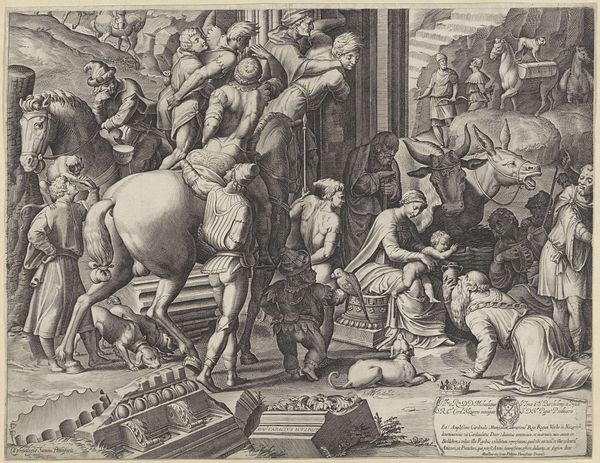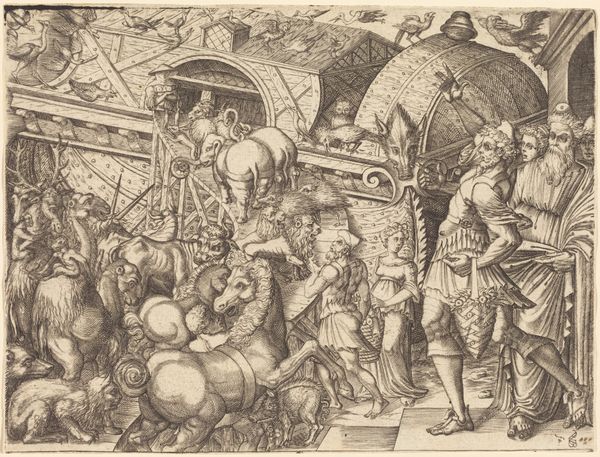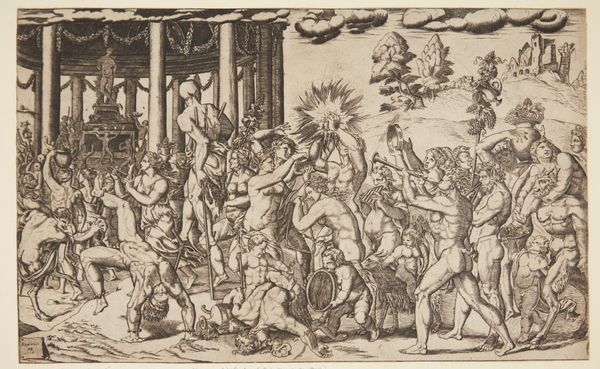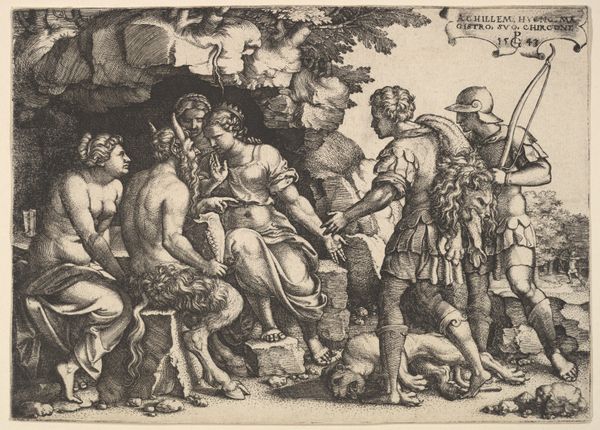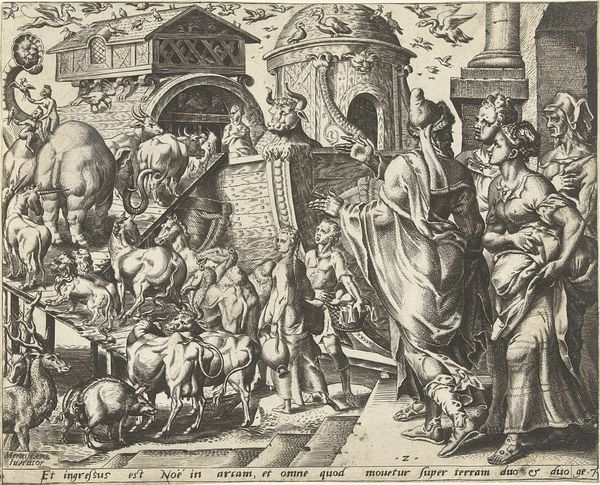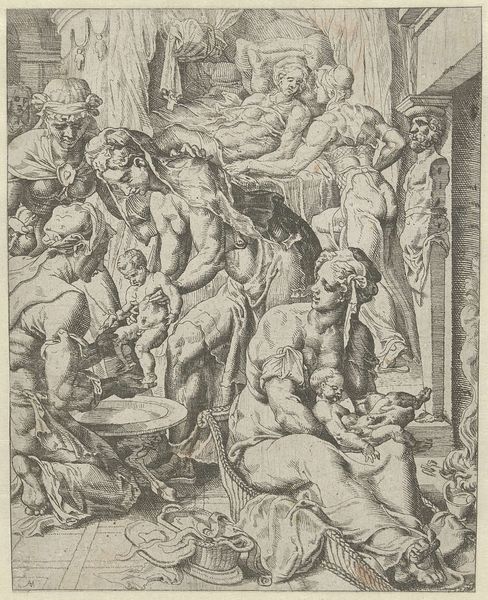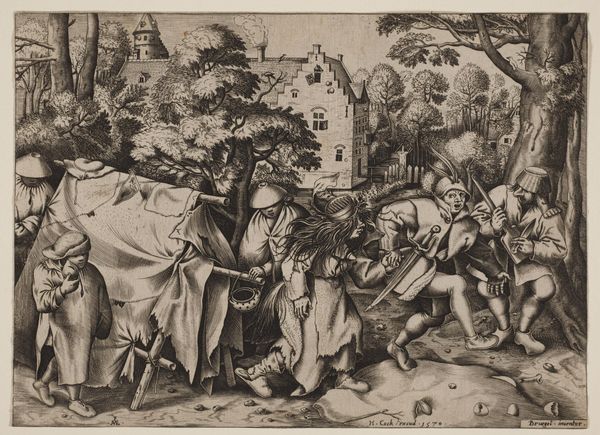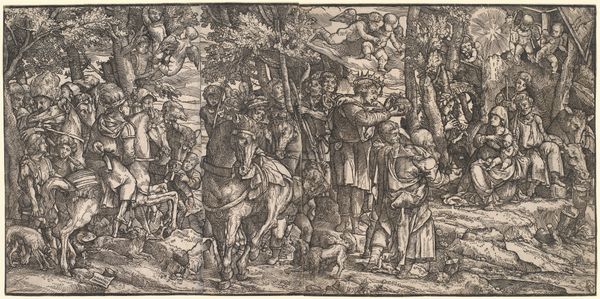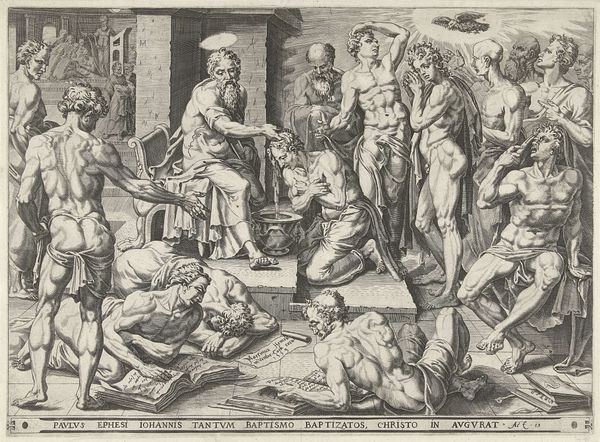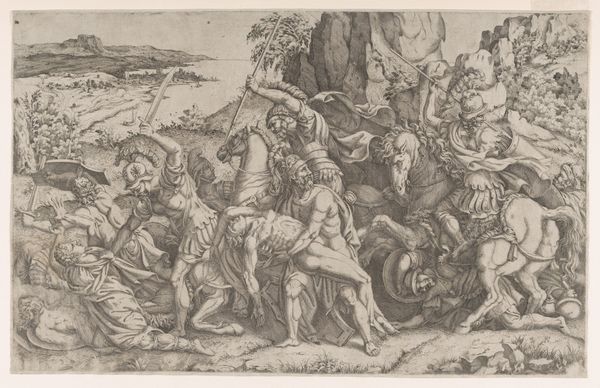
drawing, print, engraving
#
drawing
#
allegory
# print
#
figuration
#
child
#
horse
#
men
#
history-painting
#
northern-renaissance
#
engraving
Dimensions: Sheet (trimmed): 12 3/8 × 16 5/8 in. (31.5 × 42.2 cm)
Copyright: Public Domain
Curator: Welcome. Today we're examining Jean Mignon's "Adoration of the Magi," an engraving created between 1540 and 1560. It is part of the collection at the Metropolitan Museum of Art. Editor: My first impression is one of complex layering; the close, intricate lines almost create a sense of controlled chaos. Curator: Indeed. And it's crucial to consider this within the context of the Northern Renaissance and its sociopolitical climate. Mignon’s choice of the Adoration scene, allows an allegorical comment on power, religion, and global exchange, considering the complex historical moment of early globalization, colonization, and reformation of religious belief. Editor: The composition also speaks volumes. The figures are meticulously arranged to direct the viewer’s gaze toward the Christ child, bathed in implied light. The artist's choice to stage them with the detailed architectural setting does seem calculated and deliberate, framing and supporting the central narrative. The density of hatching generates form as value. Curator: This is precisely the visual language through which Mignon negotiates representation and ideological commentary. Note, for instance, the distinct hierarchical staging that is happening. The position of the Virgin and Christ against the visiting kings creates a sense of importance as they provide tribute, reflecting themes of power but in the sense of potential for social disruption within a community. Editor: Disruptive, perhaps, in its delicate balancing act. Even though we understand that the adoration narratives speak on theological terms to something spiritual, its material execution through drawing is so concrete and organized with these architectural and animal elements and these are grounding our perceptions of something extraordinary, with the ordinary. Curator: It brings these moments into something knowable which could offer different perspectives of lived experiences during a period of dramatic change. This provides insights into Renaissance era societal shifts. It uses religious events as lens on social relations, offering narratives on domination and subjugation and giving space for cultural conversation. Editor: It has indeed provided fertile ground for us today. What starts out appearing as only lines drawn, opens to larger readings on a deeper intellectual scope. Curator: Yes. It underscores art’s capacity to mirror and to actively critique existing structures. This makes us reflect today on how this extends even further into the ways that we engage one another even now.
Comments
No comments
Be the first to comment and join the conversation on the ultimate creative platform.
